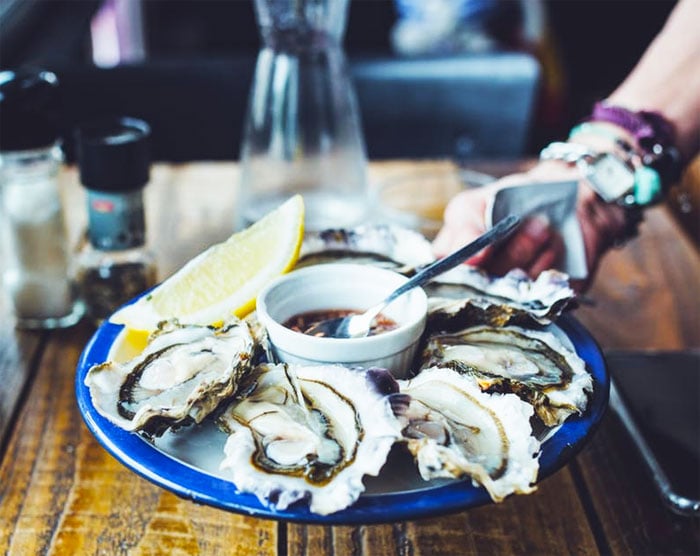
Written By: Sofia Layarda, MPH
Title: Master of Public Health
Alumni: University of California, Berkeley
Last Updated on:

The holidays are over and we’re back in the thick of routines, while in most parts of the country, sunshine is in short supply! Rather than letting post-holiday blahs get to you, check out the following food ideas to help you combat the winter blues.

Table of Contents
Chicken and turkey are both good sources of the essential amino acid tryptophan, which helps increase the levels of the “feel-good” neurotransmitter serotonin in our brain. Our body cannot manufacture trytophan, so we must get it from the foods we eat. Marinade ingredients vary depending on preference, but can be made easily using soy sauce, chopped onion or shallots, chopped garlic, a dash of cumin, coriander, and, if you prefer some heat, cayenne pepper. Let the meat marinate for at least a few hours in the fridge, and serve with salad on the side using a tart vinaigrette, and some hot steamed rice.
Think of this as a vegetarian makeover of the greasy beef and cheese topping found on restaurant nacho platters. Toss cooked black beans (if using canned beans, rinse and drain before using) into a food processor, along with a pinch of cumin and chopped cilantro. Process until smooth, then pour on top of tortilla chips. Top with chopped avocado, and if you like, grated aged cheddar. Beans and cheese are also good sources of trytophan, while avocado is a good source of folate. According to dietitian David Grotto, author of 101 Optimal Life Foods, folate deficiency is associated with an increased risk of depression among older adults.
Ditch the old takeout or delivery and bake yourself a pizza topped with tasty bits of smoked mackerel or salmon and juicy slices of mushrooms. Mushroom and fatty fish are great sources of Vitamin D, also known as the sunshine vitamin. “Vitamin D appears to play many key roles in our body’s normal functioning and metabolism, including improving the cell membrane’s receptiveness to serotonin,” says Grotto. Since the real sunshine is a little hard to come by during these winter months, it’s a good idea to eat Vitamin-D rich foods when you can. Oily fish are also a well-known source of omega-3 fatty acids, another nutrient associated with improvement of depression.
Oysters are an excellent source of the mineral zinc. Zinc is involved in many metabolic reactions in our body, and is involved in the proper functioning of approximately 100 different enzymes. Low zinc levels are associated with an increase in depressive behavior. Oyster enthusiasts happily devour them raw with a squeeze of lemon juice. If you’re a little nervous about eating them raw, you can bake them in the shell first, then serve with lemon juice. Or, make a tangy vinaigrette using lime, shallots, and a bit of salt and pepper.
Can’t live without bread? Banish white bread from your breakfast table or sandwiches, and try products made with spelt. Whole grain products are good sources of zinc, and spelt is a source of the amino acid tryptophan. (Note that spelt is closely related to the common wheat, which means it has gluten and is not suitable for those with celiac disease).
With these quick meal and snack ideas, who needs a recipe? You’re only a few prep steps away from eating your way to a better mood!
Alumni: University of California, Berkeley – Sofia believes in bringing back fun and pleasure into everyday eating. She loves cooking, and is constantly experimenting with ingredients, creating recipes and trying them out on family and friends. Her latest interest lies in finding realistic and practical ways of environmentally-friendly food/eating habits.
avocado, beans, oysters, salmon, sprouted grains, sprouting, turkey, whole grains